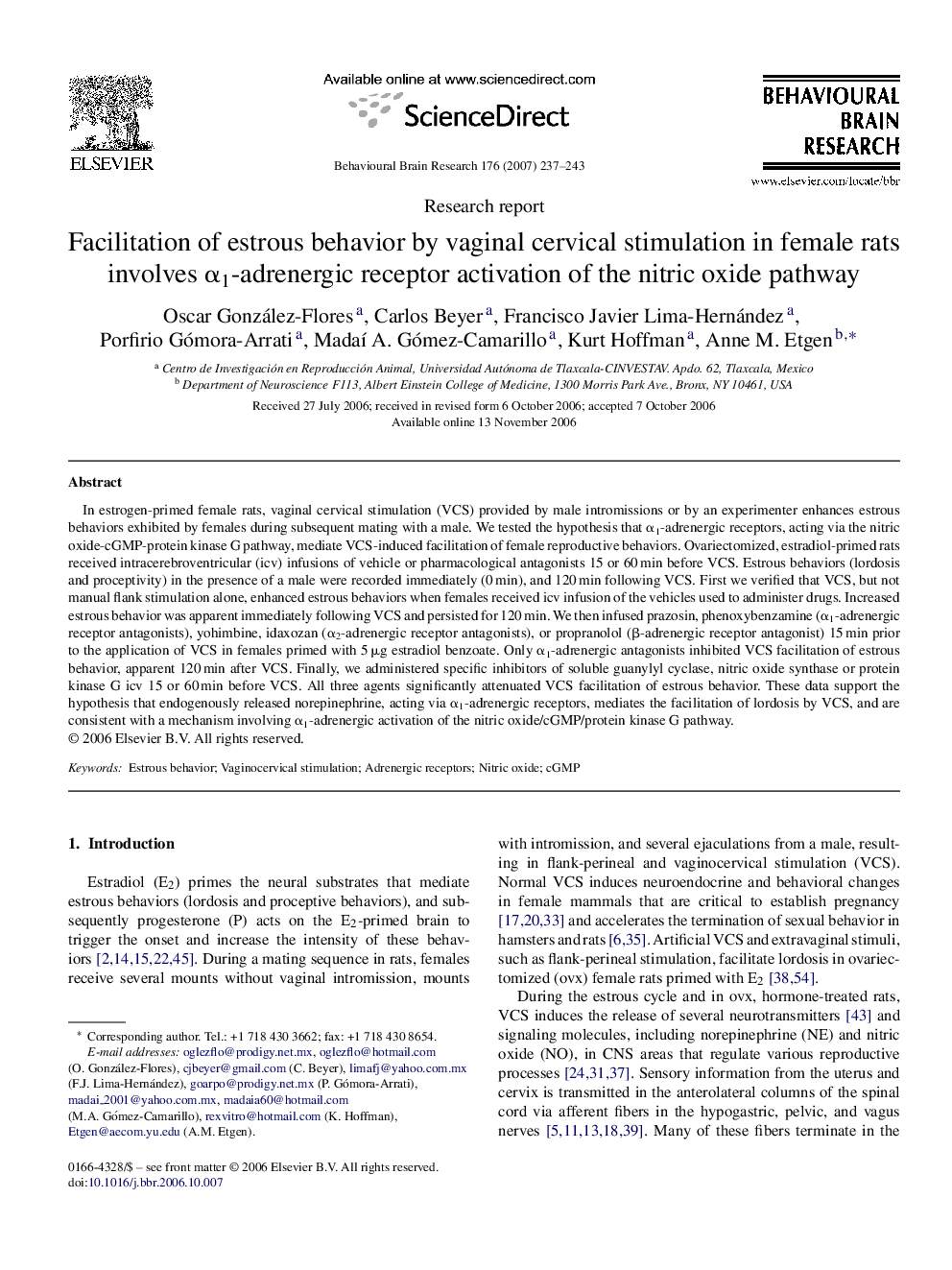| Article ID | Journal | Published Year | Pages | File Type |
|---|---|---|---|---|
| 4315744 | Behavioural Brain Research | 2007 | 7 Pages |
In estrogen-primed female rats, vaginal cervical stimulation (VCS) provided by male intromissions or by an experimenter enhances estrous behaviors exhibited by females during subsequent mating with a male. We tested the hypothesis that α1-adrenergic receptors, acting via the nitric oxide-cGMP-protein kinase G pathway, mediate VCS-induced facilitation of female reproductive behaviors. Ovariectomized, estradiol-primed rats received intracerebroventricular (icv) infusions of vehicle or pharmacological antagonists 15 or 60 min before VCS. Estrous behaviors (lordosis and proceptivity) in the presence of a male were recorded immediately (0 min), and 120 min following VCS. First we verified that VCS, but not manual flank stimulation alone, enhanced estrous behaviors when females received icv infusion of the vehicles used to administer drugs. Increased estrous behavior was apparent immediately following VCS and persisted for 120 min. We then infused prazosin, phenoxybenzamine (α1-adrenergic receptor antagonists), yohimbine, idaxozan (α2-adrenergic receptor antagonists), or propranolol (β-adrenergic receptor antagonist) 15 min prior to the application of VCS in females primed with 5 μg estradiol benzoate. Only α1-adrenergic antagonists inhibited VCS facilitation of estrous behavior, apparent 120 min after VCS. Finally, we administered specific inhibitors of soluble guanylyl cyclase, nitric oxide synthase or protein kinase G icv 15 or 60 min before VCS. All three agents significantly attenuated VCS facilitation of estrous behavior. These data support the hypothesis that endogenously released norepinephrine, acting via α1-adrenergic receptors, mediates the facilitation of lordosis by VCS, and are consistent with a mechanism involving α1-adrenergic activation of the nitric oxide/cGMP/protein kinase G pathway.
